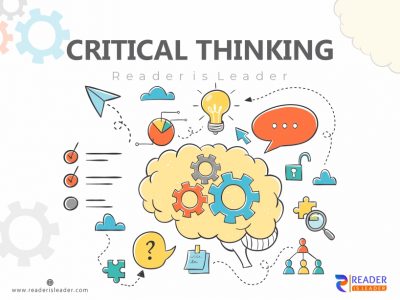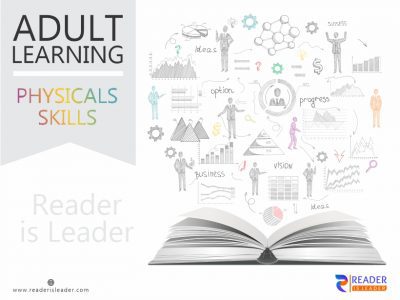Administrative Office Procedures

After completion of this course, the candidate will be able to cover the following..
For Course Benefits, please watch this Video or Read below….
[video_popup url=”https://www.youtube.com/watch?v=JvSVknkkCh8″ text=”” title=”” auto=”1″ n=”1″ p=”” wrap=”1″ img=”https://courses.readerisleader.com/wp-content/uploads/2023/05/hnhjk.png”]
- Streamlined Workflow:
The course provides you with the knowledge and skills to optimize and streamline administrative workflows, ensuring tasks are executed efficiently and effectively. This leads to increased productivity and reduced delays in completing administrative processes.
- Improved Organization:
By learning about administrative procedures, you develop effective strategies for organizing documents, files, and information. This enhances your ability to locate and retrieve information quickly, resulting in better time management and improved overall efficiency.
- Time Management:
The course equips you with time management techniques specifically tailored to administrative tasks. You learn how to prioritize tasks, set realistic deadlines, and manage your time effectively, enabling you to meet deadlines consistently and accomplish more in a given timeframe.
- Standardization:
Understanding and implementing standardized administrative procedures promotes consistency across the organization. This ensures that everyone follows the same processes, reducing errors, confusion, and misunderstandings. Standardization also facilitates smoother collaboration and transitions between team members.
- Accuracy and Precision:
Through the course, you develop a keen eye for detail and attention to accuracy in administrative tasks. You learn methods to double-check your work, verify information, and minimize errors. This leads to higher quality outputs, reduces the need for rework, and enhances the overall professionalism of your work.
- Regulatory Compliance:
The course educates you on relevant laws, regulations, and compliance requirements related to administrative procedures. This knowledge ensures that your administrative practices align with legal and ethical standards, reducing the risk of non-compliance and potential legal or reputational issues for your organization.
- Increased Productivity:
By implementing efficient administrative procedures, you eliminate redundant or unnecessary steps, utilize resources effectively, and streamline processes. This boosts productivity, enabling you to accomplish more within the same time frame while maintaining quality standards.
- Effective Communication:
The course emphasizes the importance of clear and concise communication in administrative procedures. You learn how to convey information accurately, select appropriate communication channels, and ensure that messages are understood by the intended recipients. This enhances collaboration, minimizes misunderstandings, and strengthens relationships with colleagues and stakeholders.
- Risk Management:
Understanding administrative procedures helps you identify and assess potential risks associated with administrative tasks. You learn techniques to mitigate these risks and implement preventive measures, reducing the likelihood of errors, data breaches, or operational disruptions.
- Cost Efficiency:
Streamlining administrative procedures eliminates unnecessary steps, reduces waste, and optimizes resource allocation. This leads to cost savings by minimizing expenses associated with inefficient practices, duplicate efforts, or excessive resource usage.
- Customer Satisfaction:
Efficient administrative procedures contribute to a positive customer experience. By providing timely and accurate responses, effectively addressing customer needs, and ensuring smooth interactions, you enhance customer satisfaction and loyalty, fostering long-term relationships.
- Improved Collaboration:
Proper administrative procedures establish clear guidelines and protocols for collaboration within teams and across departments. This enhances coordination, promotes effective information sharing, and encourages a culture of teamwork, leading to smoother workflows and improved outcomes.
- Documentation Management:
The course equips you with effective techniques for managing documentation in administrative processes. You learn how to organize, store, and retrieve documents efficiently, ensuring that critical information is easily accessible, reducing search time, and supporting informed decision-making.
- Quality Assurance:
Following established administrative procedures helps maintain consistent quality in outputs and services. By adhering to standardized processes, you minimize errors, ensure compliance with quality standards, and enhance the reputation of your organization.
- Adaptability:
The course prepares you to adapt to changing circumstances and evolving needs within the organization. You learn to modify administrative procedures to accommodate new technologies, industry trends, or organizational changes, promoting agility and resilience in the face of uncertainty.
- Confidence Building:
Mastering administrative procedures instills confidence in your abilities to perform administrative tasks competently. This self-assurance allows you to approach your work with confidence, handle challenges effectively, and contribute to the overall efficiency and success of your organization.
- Continuous Improvement:
The course fosters a mindset of continuous improvement in administrative procedures. You learn to evaluate existing processes, identify areas for enhancement, and implement changes to optimize performance, efficiency, and effectiveness.
- Effective Resource Allocation:
Understanding administrative procedures helps you allocate resources effectively, whether it be personnel, budget, or equipment. You learn to match resources to specific tasks, optimize their usage, and minimize waste, leading to improved cost-effectiveness and resource management.
- Stakeholder Alignment:
Proper administrative procedures facilitate alignment and coordination between different stakeholders, such as departments, teams, and external partners. This promotes effective communication, shared understanding, and collaboration, fostering a harmonious work environment and achieving common goals.
- Professional Growth:
Acquiring knowledge and expertise in administrative procedures positions you as a skilled administrative professional. This enhances your professional growth and opens up opportunities for career advancement in administrative roles, where strong procedural knowledge and efficiency are highly valued.
Administrative Office Procedures Modules
In this course, you will get 12 Modules which are describing all aspects greatly
- Module One: Getting Started
- Workshop Objectives
- Module Two: Why Your Office Needs Administrative Procedures
- Business Continuity
- Succession Planning
- Internal and External Audit Requirements
- Recovery Planning
- Case Study
- Module Three: Gathering The Right Tools
- Binder
- Section Divider
- Sheet Protectors
- Cover to Cover Binders
- Case Study
- Module Four: Identifying Procedures To Include
- Tracking Tasks for Some Days
- Reach Out to Other Employees for Feedback/Ideas
- Write Down Daily Tasks
- Keep Track Using a Spreadsheet
- Case Study
- Module Five: Top Five Procedures To Record
- Use a Template to Stay Consistent from Track to Track
- Be as Detailed as Possible
- Use Bullet Points Instead of Paragraphs
- Ask Someone to Execute the Procedure
- Case Study
- Module Six: What To Include In Your Binder (I)
- Phone Etiquette
- Business Writing
- Effective Time Management
- Creating Meeting Arrangements
- Case Study
- Module Seven: What To Include In Your Binder (II)
- Policy on Absences
- Breaks
- Salaries
- Benefits
- Case Study
- Module Eight: Organizing Your Binder
- Create a Table of Contents
- List Each Section (e.g. Accounting)
- List Procedures in that Section
- Keep Binder Updated with any New Changes
- Case Study
- Module Nine: What Not To Include In The Procedure Guide
- Passwords
- Identify Other Confidential Information Via Your Employer
- Store Information in a Separate Folder Outside of the Guide
- Find a Secure Location to Store
- Case Study
- Module Ten: Share Office Procedure Guide
- Give Guide to Boss/Executive to Review
- Inform Office Personnel of Procedure Guide
- Place Guide in a Visible Area
- Allow Office Personnel to Express Improvements/Updates if Needed
- Case Study
- Module Eleven: Successfully Executing The Guide
- Create a One Hour Meeting/Seminar for Employees
- Stay Consistent with Procedures
- Make Employees Aware of any Updated Changes
- Keep Open to Improvements
- Case Study
- Module Twelve: Wrapping Up
- Review of Parking Lot
Be Creative with Quizes
Each Module is finishing with its quiz & hence you will get to review your Modules in the form of 100 questions.
- Module Two Review Questions
- Business continuity is also called _______.
- What is not an example of a risk?
- What is profitability, employee loyalty, service, and productivity?
- An aging workforce is an example of a ________.
- Which type of auditor works for the company being audited?
- What is Not required of an auditor?
- What is the first step in recovery planning?
- What is the last step in recovery planning?
- How long did Sharon work for her company?
- When was Sharon retiring?
- Module Three Review Questions
- Which of the following is Not a resource?
- What is the first step in creating an administrative binder?
- What is useful as a section divider?
- How do section topics vary?
- Frequently used pages will require which of the following?
- Why not use sheet protectors on all pages?
- What is the average size of a binder?
- What occurs when the binder is too small?
- What size binder did Aaron have?
- What type of sheet protector did Aaron use?
- Module Four Review Questions
- What is not a way to track tasks?
- How long should tasks be tracked?
- What is Not a method of feedback?
- What needs to occur before feedback is collected?
- What needs to be written down with the tasks?
- When should tasks be recorded?
- Which tool is useful for keeping track of tasks?
- Which task is most likely to be biweekly?
- Where did Joan record her tasks?
- What did Joan estimate?
- Module Five Review Questions
- What is Not included in the template?
- Accounting would fall under which of the following in a template?
- Instructions should be ______.
- What should be done after recording steps?
- What makes procedures easier to follow?
- What should have its own bullet point?
- What is important when testing procedures?
- What is necessary after the instructions are tested?
- How long after placing her procedures in the binder, was she approached by her supervisor?
- How did she test the steps?
- Module Six Review Questions
- What determines the tone used on the phone?
- What is Not included in basic phone etiquette?
- What should be used in business writing?
- What type of language should be avoided?
- What is Not a strategy of effective time management?
- Which task should be completed first?
- Which of the following is Not a task that you would include in a checklist?
- Which meeting is easier to plan?
- How many people did not come the first day?
- What did George forget?
- Module Seven Review Questions
- What is costly?
- What should be addressed with absences?
- Break policies prevent _____.
- What should breaks comply with?
- Where would you find cost of living increases in the binder?
- What would not be included in the salary explanation in the binder?
- What may benefits overlap with?
- What information on benefits must be disclosed?
- What did the manager encourage employees to do?
- Hank was told by ____ to take complete breaks.
- Module Eight Review Questions
- The table of contents is based on which of the following?
- What is useful when corresponding tabs with the table of contents?
- What needs to be listed before the binder can be organized?
- What is Not included in typical sections?
- What is done after listing procedures?
- In what order should procedures be listed?
- Where would you note changes for the binder?
- When should changes be made?
- What information changed?
- Why was the information not changed in the binder?
- Module Nine Review Questions
- Where should passwords be stored?
- What is necessary if passwords are saved on the computer?
- What is Not an example of confidential information?
- What should be done when you are not sure if information is confidential?
- What is a good label for a folder of confidential information?
- Why choose an innocuous name for a folder?
- Where would you put a folder of confidential information in a drawer?
- What does not need to be updated for security when storing files on a computer?
- Where was the folder stored?
- How long did it take money to go missing?
- Module Ten Review Questions
- Why ask a superior to review the guide?
- How many times should you review the binder with your supervisor?
- What is Not a method of introduction?
- What is true of the introducing the guide?
- What will determine where the guide should be placed?
- The guide must be displayed in a location that is ______.
- Who may update the binder?
- What is least likely to be an opportunity for communication from employees?
- Where did Brad display the binder?
- Why didn’t Brad get many questions?
- Module Eleven Review Questions
- How long should a meeting be to explain the binder?
- What is Not included in the agenda?
- What is the most important factor in creating consistency?
- What will help ensure that the procedures are followed?
- What is Not a formal method of communication?
- What would be the best method to communicate with employees?
- What increases new ideas?
- Where are new ideas found?
- Why did Warren not follow the procedures?
- Why did employees ignore the procedures?

- What is the requirement for this course?
The course is open to anyone who is interested in learning more about the subject matter, and there are no specific entry requirements to enroll.
- What much Time I need to Spend for completion of this course?
The course is divided into different modules, with an average study time ranging from 20 to 90 minutes per module as per your convenience. While you have the flexibility to allocate your preferred amount of time to each module, after buying you will have lifetime access to the course so you can log in and out of the course as per your schedule.
- When and Where I can Study this Course?
You can study this course at any time and anywhere of your choice, you have the convenience of logging in and out of the web-based course as often as you need. The course is compatible with all devices, including computers, tablets, and smartphones, allowing you to study even while on the go.
- How I can Pay for this Couse?
To make a payment for this course, you have the option to use several payment methods including Visa, MasterCard, and PayPal account. The website employs the latest SSL encryption technology to ensure that your payment details are kept safe and secure. All payments are processed securely by PayPal, providing an added layer of protection for your peace of mind.
- How soon I can have access to the course material?
You will have access to the course immediately after you make the payment. You will receive email confirmation of payment at the same time with full access to the course material.
- Can I earn a Certificate at the end of the course?
That’s Right! At the completion of the course, we will earn a Professional Certificate that can be a valuable addition to your career and personal achievements. This certificate will serve as evidence of the knowledge and skills you have gained through the course, and can help you demonstrate your expertise to current or potential employers.
- What is the validity of the Certificate?
Certificate is your achievement, which will remain with you forever. It doesn’t have any expiry or need any renewal. Enjoy the Course and Good Luck.
Downloads
Get life-time access for 46 Well Documented Downloadable Pages of this course
This Course Includes….
24/7 Student Support
End of Course Certification
Lifetime Access
Compatible with Modern Devices
You can have all of our courses for $99 Per Year, Click Here
Related Courses Below..
Objectives
What is Administrative Procedure?
Administrative Office Procedures may not be glamorous, but they are essential to the success of any enterprise. A well-run office reduces miscommunications and helps to eliminate common errors. By making the Administrative Office a priority, you will establish clear policies and procedures with employee understanding and buy-in, which ensures that your work environment runs smoothly.


Features
Research has consistently demonstrated that when clear goals are associated with learning, it occurs more easily and rapidly.
Need of Administrative Procedures
Administrative Procedures are more than mundane policies. They are put in place to ensure the survival of the company in any event or situation.
Identifiying Procedures to Include
When creating an Administrative Office binder, it is important to choose the procedures that are necessary. If you put too much information in a binder, it becomes difficult to navigate. If, however, you do not put enough information in a binder, it is useless.
Successfully Executing Procedures
The guide must be executed with the same diligence that was used to create it. This requires training, consistency, and communication.



Featured Modules

Gathering the Right Tools
Any activity requires the use of the correct tools, and the Administrative Office is no exception.

Identiyfing Procedures to Include
It is important to choose the procedures that are necessary.

Top Five Procedures
Begin by choosing the top five procedures that you need to record.


What to Include in Your Binder
When creating an Administrative binder, you must determine what should be included and what should not.

Organizing Your Binder
Once the policies and procedures are completed, it is time to place them in the binder.

Share Office Procedure Guide
Once you have completed the guide, you must share it with the rest of the office.














